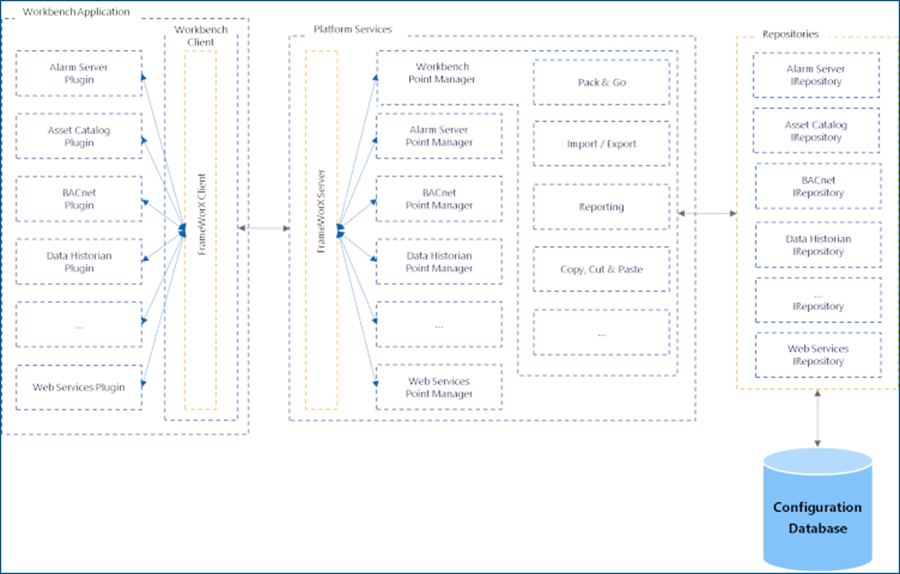Internal Architecture of Workbench
Workbench operates as a distributed system based on a client-server model. The Workbench application, or Workbench client, serves as a centralized project and SCADA application management tool. It works with a set of satellite components (also known as providers) that interact with the Workbench Server, which is a combination of the Workbench point manager and the FrameWorX server.
Each GENESIS server component (including third party components) can be configured in Workbench using specific plugins exposed within the application.
The plugins, generally referred to as applications or providers, represent the client side of the Workbench application. The server-side communication occurs through interactions of the FrameWorX client to the FrameWorX server. This setup allows the Workbench client to connect with the Workbench point manager.
The Workbench point manager represents the server-side of the application. It provides the following functions.
- Interacts with the FrameWorX server to retrieve security and licensing information.
- Communicates with other point managers.
- Accesses configuration data stored in the SQL Server database via the IRepository interface.
Additionally, the Workbench point manager provides services such as Import/Export, Pack and Go, Task Management, and Project Reporting.
The architecture diagram illustrates the Workbench components and their interoperability.
